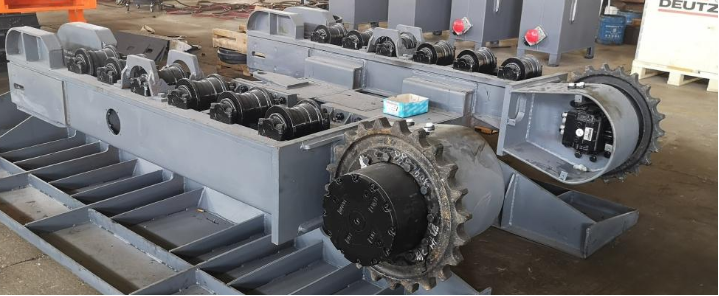Home solar batteries are becoming increasingly popular due to their numerous advantages, as we'll explore in this article. While solar energy storage was once considered a niche product, it's now a practical solution for many homeowners—not just those aiming to disconnect from the grid entirely. Technological advancements and supportive government incentives have played key roles in making this possible. This post will guide you through essential topics to help you decide if a solar battery is the right choice for your home. After reading, an experienced solar installer can offer tailored advice based on your specific situation. Below, you'll find answers to some frequently asked questions about solar batteries: The UK has set ambitious goals to cut emissions by 78% by 2035 compared to 1990 levels. Each of us can contribute to this effort, and adopting solar power and storage is one way to make a difference. Looking ahead to 2050, the goal of achieving net-zero emissions means now is the perfect time to embrace renewable energy in your home. We can't tell you definitively whether a solar battery is necessary for your home, but we can present the facts so you can make an informed decision. To begin with, let's explore what solar batteries are and how they work. Think of solar batteries as oversized versions of the standard batteries found in remote controls, but instead of powering a single device, they store energy generated by photovoltaic (PV) solar panels. With a solar battery, you won't have to worry about running out of power. You could even go off-grid if desired, relying solely on the energy created and stored in your solar setup to power your home. Moreover, as explained later in the article, energy stored in a solar battery can be sold back to the grid. Government programs also allow you to earn income from this through various tariffs and incentives. Unlike disposable batteries, solar batteries don't "run out." Instead, they recharge whenever the solar system generates power—most of the time (except at night). Solar batteries for homes are designed to store excess energy generated by solar panels. In the past, this surplus energy would typically be sent directly to the grid, but with a battery, that's no longer necessary. Each solar battery has a capacity rating indicating how much power it can hold. Did you know some batteries are stackable, allowing multiple units to be connected for increased capacity? The depth of discharge (DoD) refers to how much of the battery's total capacity can be used before needing a recharge. For example, a 100% DoD means the full capacity of the battery (like 3.0kWh) can be used, while a 96% DoD allows only 2.8kWh of a 3.0kWh battery to be used before requiring another charge cycle. As discussed below, different battery types suit different applications. The two most common types of solar batteries on the market today are lithium-ion and lead-acid. Despite being relatively new, lithium-ion batteries dominate the market due to their longevity and higher usable capacity compared to other options. Lead-acid batteries, on the other hand, have been around since the 1800s and remain popular because of their reliability and durability. Here's a closer look at the benefits of each type: *Discharge depth refers to the amount of energy the battery can use before needing a recharge. Lithium-ion batteries excel for powering homes because they offer high storage capacity in a compact space compared to lead-acid alternatives. Given their reliability, lead-acid batteries are ideal for off-grid solar systems and serve as excellent backup solutions during emergencies. The price of solar batteries varies depending on your requirements. The size of your solar system determines how much storage you need, which in turn affects the capacity and cost of the battery. As with any product, different brands and models vary. Focus on the durability and capacity of the battery, then match that with your budget for the best results. The amount of energy a solar battery can store differs from how much storage you actually need. Consider both the size of your solar system and your daily energy consumption habits. For instance, a 5kW solar power system might produce around 20kWh of energy on a good day, totaling approximately 4,500 kWh annually. Without a battery, roughly 13kWh of this energy is usually exported to the grid daily. To store this excess energy for nighttime use or emergencies, a battery with a capacity between 10kWh and 13kWh is recommended. Ultimately, the size of the battery depends on your goals and needs. Current solar batteries are designed to operate effectively for up to 15 years, though technological improvements are expected to extend their lifespan significantly. While 15 years is substantial—and also the timeframe it takes for most solar setups to recoup their initial investment—the battery will likely need replacement before the solar panels do. Major manufacturers also offer warranties, commonly lasting for ten years or 10,000 charge cycles, whichever occurs first. Several factors determine the lifespan of a solar battery, including usage frequency, battery type, and storage environment. Let's dive deeper into these aspects: Think about your smartphone's battery. Regular charging gradually diminishes its overall lifespan, often so subtly that we barely notice. The same principle applies to solar batteries. A battery used nightly to power a home will degrade faster than one reserved for emergencies. Similarly, living entirely off-grid and repeatedly cycling the battery will accelerate wear and tear. There are three primary types of solar batteries: lead-acid, lithium-ion, and saltwater. Among these, lithium-ion batteries stand out for their longevity and storage capacity. See the previous section for a more detailed comparison of the three types. Solar batteries should be kept in a temperate, dry environment rather than exposed to extreme temperatures. Manufacturers often provide specific guidelines for optimal storage conditions based on battery type. Generally, the following temperature ranges are recommended: Extreme heat or cold can negatively impact batteries, so maintaining a controlled storage area is crucial. Avoid placing batteries in direct sunlight. Low-maintenance batteries can often be stored indoors, whereas others require stricter conditions, such as being housed in a ventilated box in a shed, garage, or outbuilding. In all cases, ensure the storage area has sufficient thermal mass to absorb heat energy and prevent adverse effects on the battery's condition and performance. Common materials used to enhance thermal mass include concrete, filled concrete, and stone. Have any questions about solar batteries or solar panels? Reach out to a dedicated solar battery expert. Before investing in solar panels and storage solutions, it's important to learn about the following government incentives, which can lower the cost of solar battery installations and provide ongoing savings. If eligible, you may qualify for a reduced VAT rate of 5% on the installation of certain renewable technologies. Your supplier will apply this reduced rate to the installation and any related work. To qualify for the reduced VAT rate, you must be over 60 years old or receive one or more of the following UK government benefits: When selecting a solar battery for your home, consider the following three factors, which will impact your system's capacity and long-term energy production: Another consideration is the purpose of the battery. For off-grid setups, lead-acid batteries are recommended due to their durability. Lithium-ion batteries, on the other hand, are excellent for domestic use because they last longer, offer greater capacity, and require minimal space for storage. Solar batteries for homes are gaining traction rapidly. If you have any questions about solar panels or the information presented here about solar batteries, our friendly team is ready to assist you. For more insights into solar panels, visit our blog where you'll find articles covering various topics to help you choose the right panels and understand important aspects like maintenance. Excavator Final Drive Final Drive,Excavators Final Drive,Excavator Final Drive XINGTAI ZHONGWEI ZHUOTE HYDRAULIC TECHNOLOGY CO.,LTD , https://www.zwzhtehydraulic.com
What Are Solar Batteries?
How Do Solar Batteries Work?
What Types of Solar Batteries Are Available?
Lithium-Ion
Lead-Acid
How Much Do Solar Batteries Cost?
How Much Energy Can Solar Batteries Store?
How Long Do Solar Batteries Last?
What Factors Influence the Lifespan of a Solar Battery?
How Often Is the Battery Used?
The Type of Battery Installed
The Environment Where the Battery Is Stored
Government Incentives for Solar Batteries
VAT Reduction
Who Is Eligible?
How to Choose a Solar Battery
Do I Need a Solar Battery at Home?
â… . Strong power source

â…¡. Complete product models
â…¢. Superior quality assurance
1.Quality control

2.Production process
Our products
ZHTE HYDRAULIC excavator final drive is the core of the excavator's walking force. The excavator final drive is composed of the travel motor and the Excavator Travel Reducer, which is also called the traveling motor assembly. The excavator is equipped with a excavator final drive on both sides, which can directly drive the crawler and give the machine a strong action force to achieve forward and backward movements. The excavator final drive, as the key power output device of the hydraulic system, converts the hydraulic energy into mechanical energy efficiently. This is obviously different from the Excavator Hydraulic Pump. The pump converts the mechanical energy into hydraulic energy, while the walking motor runs in the opposite direction. Through this energy conversion, a huge torque and continuous rotational motion are generated, providing strong power for the walking of the excavator. The excavator travel reducer realizes the deceleration effect of power transmission through planetary gear.
As the power output unit of the whole hydraulic system, the excavator final drive is similar to the excavator hydraulic pump in structure. However, its working principle is quite different from that of pump. The pump converts the mechanical energy into the hydraulic energy, while the travel motor converts the hydraulic energy into the mechanical energy efficiently, so as to generate huge torque, provide strong power for the walking of the excavator, and realize continuous rotation motion.
ZHTE HYDRAULIC is always on the top in the production of excavator final drive. The product types are extremely complete and can be widely used for excavators of different brands and models. No matter what the specification and performance requirements of the excavator are, we can find the most suitable hydraulic motor in the product series of . This variety of product model selection provides users with great convenience and flexibility. Users do not need to worry about the difficulty in finding suitable traveling motor assembly due to the difference of excavator brand or model. With comprehensive product coverage, ZHTE meets diversified market demands and becomes the trust choice of many excavator users.
The ZHTE travel motor assembly is subject to strict quality control during production. From the selection of raw materials to each production link, there are professional technicians for strict inspection. Whether the inspection of casting blank, rough turning and fine turning inspection during processing, inspection after normalizing, carburizing and other special processes, and various tests before assembly, assembly process and ex-factory, all ensure the high quality and reliability of the product.
ZHTE's persistent pursuit of quality makes its walking motor assembly win a good reputation in the market, providing a solid guarantee for the stable operation of the excavator.
(1) Casting blank (inspection)
(2) Rough turning (inspection)
(3) Normalized (inspection)
(4) Fine turning (inspection)
(5) Gear teeth (inspection)
(6) Boring (Inspection)
(7) Chamfer (Inspection)
(8) Carburizing (Inspection)
(9) Gear chamfering and deburring (inspection)
(10) Shot peening (inspection)
(11) Inspection, warehousing and rust prevention (inspection) according to drawings
(12) Inspection before assembly
(13) Cleaning before assembly
(14) Assembly (automatic assembly line)
(15) Product form and performance test, ex-factory test
(16) Fill lubricating grease
(17) Painting treatment (inspection)
(18) Packing and packing (inspection)
(19) Warehousing of packaged finished products
ZHTE HYDRAULIC excavator final drive is subject to whole-process inspection, with strict quality control, EU CE certification and quality assurance.
include: Excavator Hydraulic Pump, Excavator Final Drive,Excavator Swing Motor, Excavator Travel Reducer, Excavator Swing Reducer, Swing Bearing ,Hydraulic Breaker